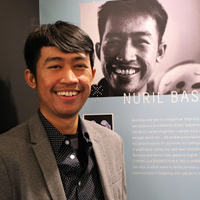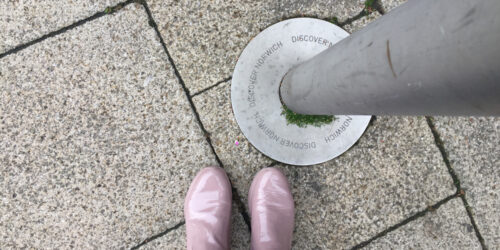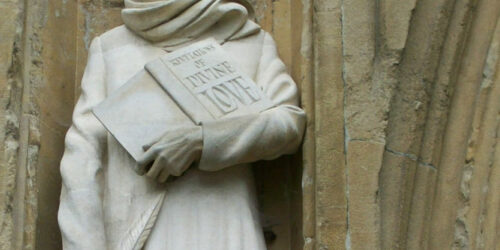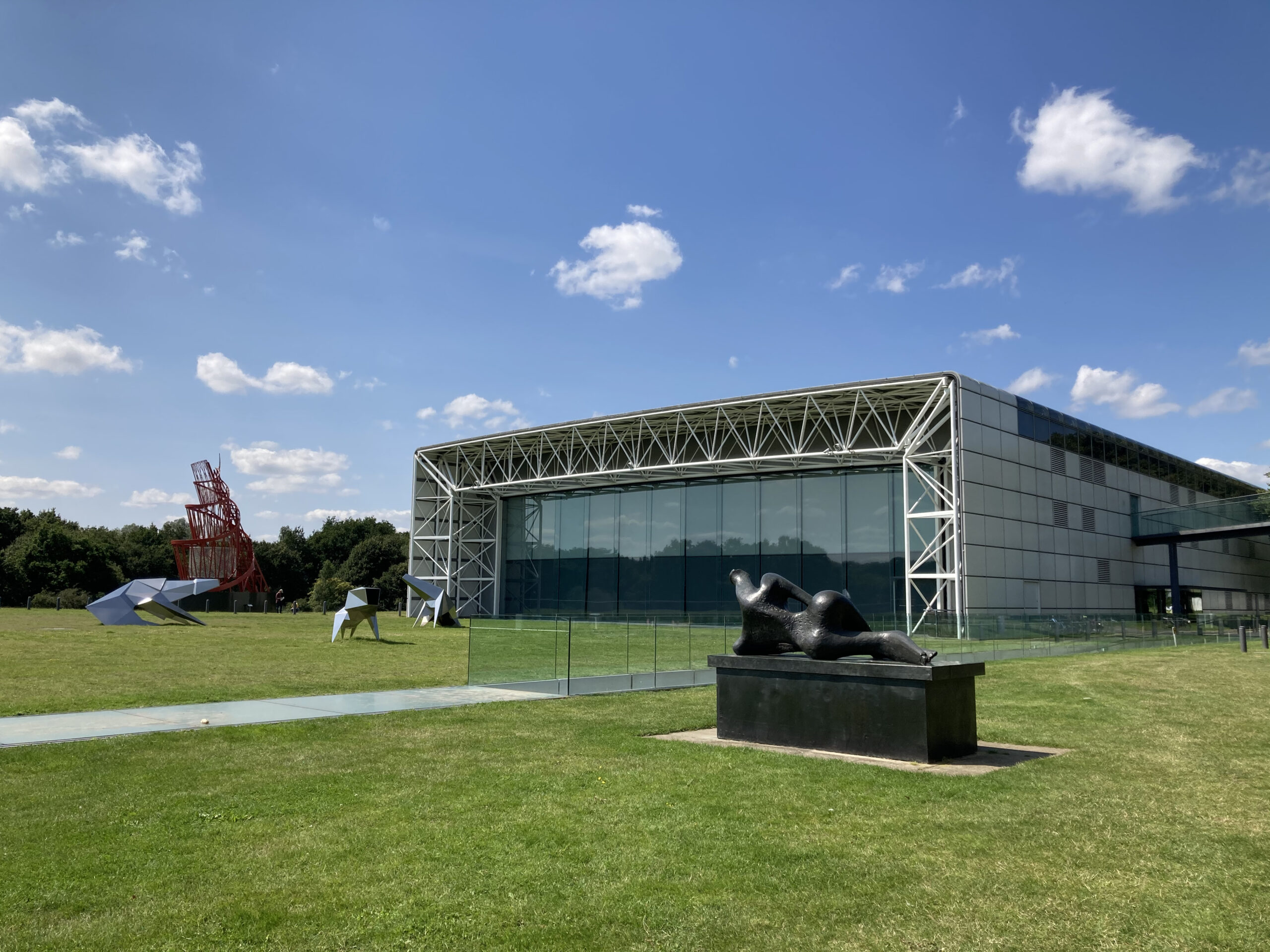
As part of the Walking Norwich series, feminist South Korean author Kang Young-sook has written about her experience at UEA’s Doris Lessing’s Archive, in a piece translated by Rachel Park.
I waited for the bus that would take me to the Sainsbury Centre for Visual Arts, where there was currently an exhibit commemorating Doris Lessing’s centenary. Whatever city I visit, I always go to an archive dedicated to women or a woman author. The archive doesn’t necessarily have to be that of a famous person, nor an author, but whoever the woman may be, their archives are always a source of fascinating inspiration.
As I was waiting for the bus, I inhaled deeply and tried to guess at the smell of Norwich. In fact, all cities have a special smell or air particular to them. Norwich, too, exudes a distinct aroma. That of the fallen leaves clinging to the ground dampened by rain and moisture, or perhaps that of Norwich castle’s ancient walls. There were also the smells of waffles sold on the street and bus fuel.
On the path to Doris Lessing’s archive, you can meet many women. Sarah, the protagonist of “The Pit” from Lessing’s short story collection, London Observed: Stories and Sketches, was waiting for her ex-husband, James. Although James had re-married another woman named Rose, he had called Sarah saying “he wanted to meet her ‘just to talk.’” In The Real Thing, another short story from the same collection, there is a woman named Jody who may very well be Rose. Jody, engaged to a man named Henry, calls a man named Sebastian who is seeing Angela (Henry’s former wife), just to meet and talk. On this path, one can also meet Anna and Molly, the characters from Lessing’s most famous work, The Golden Notebook. Yet it is not only them. Here, one can also meet “Yeongin,” the teenage protagonist from my novel, Writing Club. Yeongin and her single mother, “Writer Kim,” reside in Bukchon, Seoul and undergo numerous hardships due to poverty. But even within those difficult circumstances, they gather every week with their neighbours for a writing club and strive to write. London, Seoul, Norwich—regardless of the city, one can meet many women on this path; women who sit in cafés waiting for someone, women who think, women who write.
The bus is quite packed. As usual, the students and other passengers are all lost in their own thoughts. Leaning my head against the rain-spattered window, I think of Doris Lessing’s notebooks. An author who created black, red, and yellow notebooks. Why not a chocolate-coloured one, or a green one? Various thoughts flood my mind. The crowd in the bus slowly starts to dissipate and the bus gathers speed, soon arriving at the University of East Anglia. The sunshine is warm and for some reason, I feel that I know the people walking in front of me. Though I have always been somewhat of a pessimist, I marvel at how, as I walk along this path, I am filled with optimism. All of it because of the nice weather.
Walking across the beautiful University of East Anglia campus, I pass through the tube-shaped walkway suspended in the air and enter the art centre. Doris Lessing was born in 1919, moved to London in 1949, and her representative work, The Golden Notebook, was published in 1962. Though this was also the case in Korea, good moments were precious few for those who lived during this period. Nevertheless, Doris Lessing constantly strove to learn many things, lived life to its fullest, and wrote prolifically. The more you read The Golden Notebook, the more complicated it becomes, simultaneously an experimental and realist novel of immense depth.
I enter the exhibition hall and as I look at her pictures, the first sentence of The Golden Notebook comes to mind:
‘…the point is, that as far as I can see, everything’s cracking up.’ (The Golden Notebook, pg. 25)
The novel opens with Anna’s words stating that everything is being destroyed—or rather, her diagnosis of reality. Perhaps it was to cure this very destruction that the author created numerous notebooks. That is to say, writing occasionally saves lives. Recording a life to prevent its collapse—was this not Doris Lessing’s life?
The lovely, tiny memos personally scrawled by Lessing on her stationery, encompassing Africa, war, Sufism, Afghan Relief, sex and morality, capitalism and scientific technology, are reminders that the path she walked was wide and deep. Moreover, the small sewing machine she used and her adorable vest, similar to the ones worn by Korean grandmothers, greatly helped me in imagining the kind of person she was.
Is it possible for anyone to live as fully as Doris Lessing? I thought, as I went outside and followed the pretty, grassy path in front of the Art Centre. Can I even live as fully as my own mother? I will be unable to live life as fully as my own mother. There is no doubt in my mind.
Yet I want to confess that today, through this path, I found a kind of warm strength. A strength founded upon pushing forward and plunging into life and literature with one’s entire body, and of making records. A path without much happiness, difficult and strenuous. Suddenly, I become curious about the name of the trees lining the path. I ask a passerby, “Excuse me, is that an elm tree?” and turn around, only to find myself alone on the path once more.
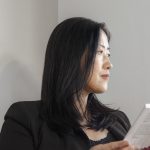 Kang Young-sook is a feminist South Korean author. She often writes about the female grotesque, delving into varying genres, such as urban noir, fantasy, and climate fiction. Since her debut in 1998, she has published a number of novels and short story collections, and has received many prestigious awards, such as the Hanguk Ilbo Literature Prize, Kim Yujeong Literary Award, and Lee Hyo-seok Literature Award, among others.
Kang Young-sook is a feminist South Korean author. She often writes about the female grotesque, delving into varying genres, such as urban noir, fantasy, and climate fiction. Since her debut in 1998, she has published a number of novels and short story collections, and has received many prestigious awards, such as the Hanguk Ilbo Literature Prize, Kim Yujeong Literary Award, and Lee Hyo-seok Literature Award, among others.
She participated in the International Writing Program’s fall residency at the University of Iowa in 2009, and was also a visiting writer-in-residence at UC Berkeley in 2014. In November 2019 she was writer in residence at Dragon Hall in Norwich. She currently teaches creative writing at Ewha Womans University and Korea National University of Arts.
You may also like...
Read ‘Gentleman’s Walk’ by novelist Nuril Basri
‘Without these people the streets must be really sad and lonely’

6th March 2023
Read ‘Stranger on a Walk’ by Ekaterina Petrova
‘My walks became as much about the real as about the imagined, as much about the visible as about the invisible, about the long-lost as about the still-remembered.’

5th December 2019
Read ‘St. Julian’s Alley and Dragon Hall’ by literary translator Anton Hur
‘Once you find your way in, it’s almost like another world’

20th September 2019



